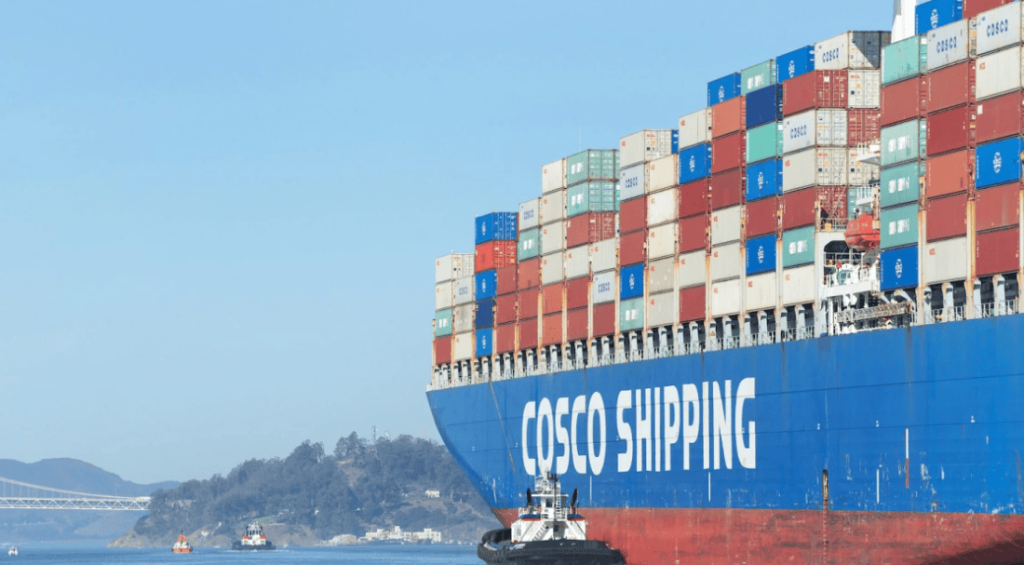While tariffs have been the most visible policy tool during the US-China trade war, anecdotal evidence points to the use of Chinese state-owned enterprises as a hidden lever of protectionism. This column presents new systematic evidence showing that state-owned enterprises drove a significant share of the decline in US exports to China in 2018–2019, especially in agriculture and industrial supplies, as well as in industries concentrated in Republican-leaning US states. These findings highlight the need to include state-owned enterprises in any full accounting of modern trade policy tools.
The US and China are engaged in an unprecedented trade war (Amiti et al. 2019, Fajgelbaum et al. 2020, Flaaen et al. 2020, Cavallo et al. 2021, Benguria et al. 2022, Blanchard et al. 2024, Chen et al. 2024, Chor and Li 2024, Handley et al. 2025, Flaaen and Pierce, forthcoming). In this context, tariffs have been the most visible tool of trade policy, and their effects have been widely documented. Beyond tariffs, anecdotal evidence points to the use of Chinese state-owned enterprises (SOEs) as an additional lever to restrict imports from the US. In recent research (Benguria and Saffie 2025), we provide systematic evidence on the role of Chinese SOEs in the trade war during the period 2018-2019.
To motivate this issue, consider the case of crude petroleum oil (see Figure 1). All Chinese imports of this product from the US go through SOEs. While this product did not face retaliatory tariffs by China during the period shown in the figure, trade flows fell drastically and were exactly zero in August through October 2018 and January 2019.
Figure 1 US exports of crude petroleum oil to China and to the rest of the world


Note: This figure plots US exports of crude petroleum oil (HS 4-digit code 2709) to China and to the rest of the world. For exports to China, months with exports equal to zero are marked in black. This industry had a 100% state-owned firm import share in 2015.
Source: Benguria and Saffie (2025).
To analyse the role of Chinese SOEs more systematically, we construct an industry-level measure of the share of Chinese imports from the US that is purchased by Chinese SOEs. This measure is constructed from Chinese imports microdata in 2015. Overall, Chinese SOEs account for a fifth of imports from the US in 2015, but there is wide variation across industries. Based on regression analysis, we find that, after controlling for Chinese tariffs, US exports to China fall more in industries with a higher SOE share. A simple calculation abstracting from general equilibrium effects indicates that while tariffs account for an 8% decline in US exports, the SOE effect accounts for a 4% decline. We also find that taking the SOE effect into consideration does not modify the effects of tariffs on trade volumes estimated by us or others in the literature – it is a separate and quantitatively important channel.
We also provide evidence of the timing of this SOE effect. We find that the SOE effect was stronger during the last months of 2018 and the initial months of 2019. At this point, China had imposed tariffs on nearly all products. In addition, the effect was more important in some sectors than others. It was larger among agricultural goods and industrial supplies – for example, among agricultural goods, the SOE effect is about five times larger than the overall effect described earlier, accounting for a 19% decline in US exports. Further, we see that the SOE effect was concentrated among ‘Republican industries’, that is, industries with production concentrated in counties with large share of Republican votes. This is in line with previous work that has found that Chinese tariffs also hit mostly Republican counties (Fajgelbaum et al. 2020, Fetzer and Schwarz 2021).
Further, we show that this SOE effect is robust to alternative explanations and empirical specifications. With a triple-difference specification based on exports to China and the rest of the world, we see that the decline of US exports in high-SOE industries is China-specific, as we would expect during the trade war. In addition, it is robust to allowing for a differential tariff pass-through in high-SOE industries. Further, we show that it is not confounded by other industry features such as the intensity of related-party trade or of China’s processing trade customs regime. We also show that the SOE effect is not driven by emblematic sectors like oil or soybeans.
The example in Figure 1 shows that, for crude petroleum oil, US exports to China fell to exactly zero in some months. Motivated by this, we also examine whether the SOE effect had an impact on the extensive margin of trade. In other words, we ask whether some products stopped being imported entirely due to the SOE effect. We find that the overall effect on the extensive margin across all sectors is negative but not statistically significant. However, among agricultural goods, we find that the action of SOEs did have a statistically significant effect reducing US exports at the extensive margin, lowering by 4% the probability of observing trade flows of a given product.
To further establish this SOE effect, we also study data on Chinese imports from the rest of the world (i.e. excluding the US). With these data, we find that in industries with high SOE shares, China increased imports from the rest of the world during the trade war. Further, the timing coincides with the SOE effect found in US exports to China.
In previous work (Benguria and Saffie 2024), we found that US exports were largely redirected to other destinations in response to Chinese tariffs. In industries facing higher Chinese tariffs, exports to the rest of the world increased. We find that, in contrast, there was no significant export reallocation in response to reduced imports by Chinese SOEs. One possible interpretation of this result is that the SOE effect is less salient and less transparent than tariffs from the perspective of US exporting firms, making reallocation more difficult.
To conclude, we emphasise that while SOEs have been absent from the analysis of trade policy, there is clear evidence from the 2018-2019 trade war episode that they can be used to restrict trade flows. Understanding the role of SOEs is important to capture the full extent of protectionism. Further, SOEs allow for asymmetric protectionism, as they are only available for countries with a large participation of the state in the economy.
In light of current events, there is renewed interest in trade policy (Benigno 2025, Conteduca et al. 2025). As in previous years, much of the focus is on tariffs, which are more visible and easier to quantify. Going forward, a key question is whether SOEs keep playing a relevant role in the ongoing trade war. In addition, there is an emerging literature on the geopolitical dimension of international trade (Bonadio et al. 2024, Freund et al. 2024, Gopinath et al. 2025). This raises the possibility that SOEs also respond to geopolitical concerns amid the process of US-China decoupling.
Source : VOXeu



































































